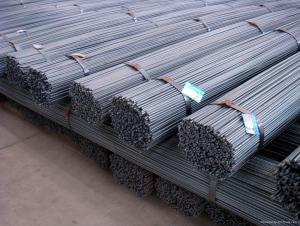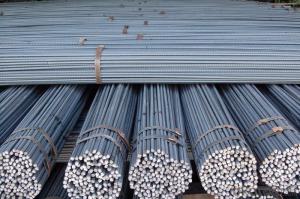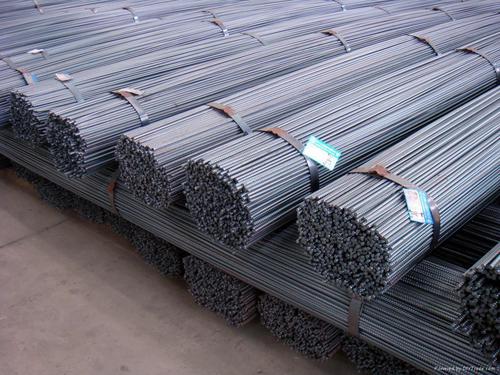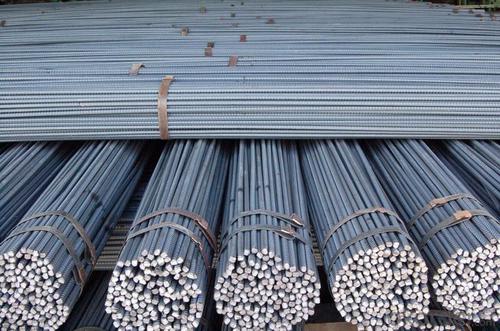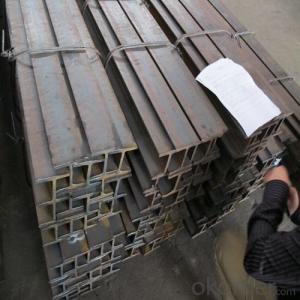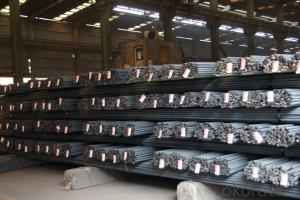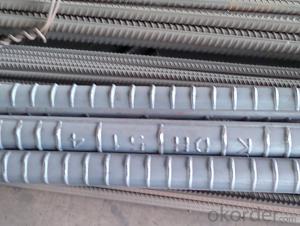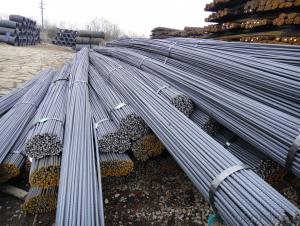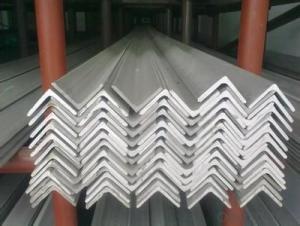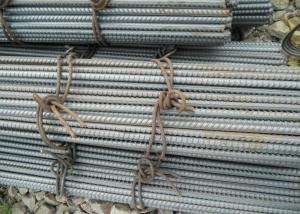Deformed bars Hot Rolled with Material GB HRB400
- Loading Port:
- Tianjin
- Payment Terms:
- TT OR LC
- Min Order Qty:
- 25 m.t.
- Supply Capability:
- 10000 m.t./month
OKorder Service Pledge
OKorder Financial Service
You Might Also Like
Product Description:
OKorder is offering high quality Hot Rolled Rebars at great prices with worldwide shipping. Our supplier is a world-class manufacturer of steel, with our products utilized the world over. OKorder annually supplies products to European, North American and Asian markets. We provide quotations within 24 hours of receiving an inquiry and guarantee competitive prices.
Product Applications:
Deformed bar is widely used in buildings, bridges, roads and other engineering construction. Big to highways, railways, bridges, culverts, tunnels, public facilities such as flood control, dam, small to housing construction, beam, column, wall and the foundation of the plate, deformed bar is an integral structure material. With the development of world economy and the vigorous development of infrastructure construction, real estate, the demand for deformed bar will be larger and larger..
Label: to be specified by customer, generally, each bundle has 1-2 labels
Product Advantages:
OKorder's Hot Rolled Rebars are durable, strong, and resist corrosion.
Main Product Features:
· Premium quality
· Prompt delivery & seaworthy packing (30 days after receiving deposit)
· Corrosion resistance
· Can be recycled and reused
· Mill test certification
· Professional Service
· Competitive pricing
Product Specifications:
Manufacture: Hot rolled
Grade: HRB400 – HRB500
Certificates: ISO, SGS, BV, CIQ
Length: 6m – 12m, as per customer request
Packaging: Export packing, nude packing, bundled
Grade | Technical data of the original chemical composition (%) | ||||||
C | Mn | Si | S | P | V | ||
HRB400 | ≤0.25 | ≤1.60 | ≤0.80 | ≤0.045 | ≤0.045 | 0.04-0.12 | |
Physical capability | |||||||
Yield Strength (N/cm²) | Tensile Strength (N/cm²) | Elongation (%) | |||||
≥400 | ≥570 | ≥14 | |||||
Theoretical weight and section area of each diameter as below for your information:
Diameter(mm) | Section area (mm²) | Mass(kg/m) | Weight of 12m bar(kg) |
6 | 28.27 | 0.222 | 2.664 |
8 | 50.27 | 0.395 | 4.74 |
10 | 78.54 | 0.617 | 7.404 |
12 | 113.1 | 0.888 | 10.656 |
14 | 153.9 | 1.21 | 14.52 |
16 | 201.1 | 1.58 | 18.96 |
18 | 254.5 | 2.00 | 24 |
20 | 314.2 | 2.47 | 29.64 |
22 | 380.1 | 2.98 | 35.76 |
25 | 490.9 | 3.85 | 46.2 |
28 | 615.8 | 4.83 | 57.96 |
32 | 804.2 | 6.31 | 75.72 |
36 | 1018 | 7.99 | 98.88 |
40 | 1257 | 9.87 | 118.44 |
50 | 1964 | 15.42 | 185.04 |
FAQ:
Q1: Why buy Materials & Equipment from OKorder.com?
A1: All products offered byOKorder.com are carefully selected from China's most reliable manufacturing enterprises. Through its ISO certifications, OKorder.com adheres to the highest standards and a commitment to supply chain safety and customer satisfaction.
Q2: Can stainless steel rust?
A2: Stainless does not "rust" as you think of regular steel rusting with a red oxide on the surface that flakes off. If you see red rust it is probably due to some iron particles that have contaminated the surface of the stainless steel and it is these iron particles that are rusting. Look at the source of the rusting and see if you can remove it from the surface.
Q3: What is the normal tolerance of Hot Rolled Mild Steel Angle Beams for Structures and for Buildings?
A3: Normally 3%-5%, but we can also produce the goods according to the customers' requests.
Images
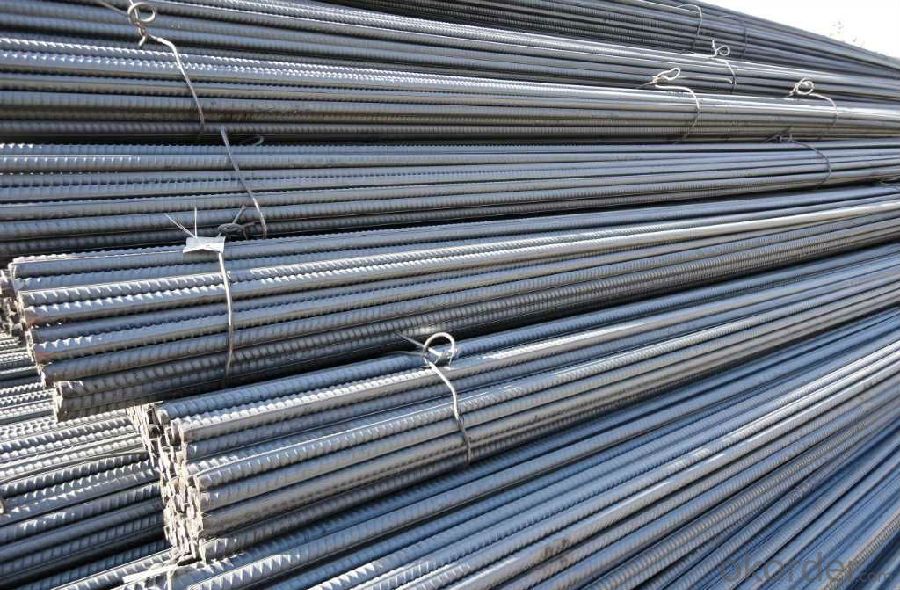
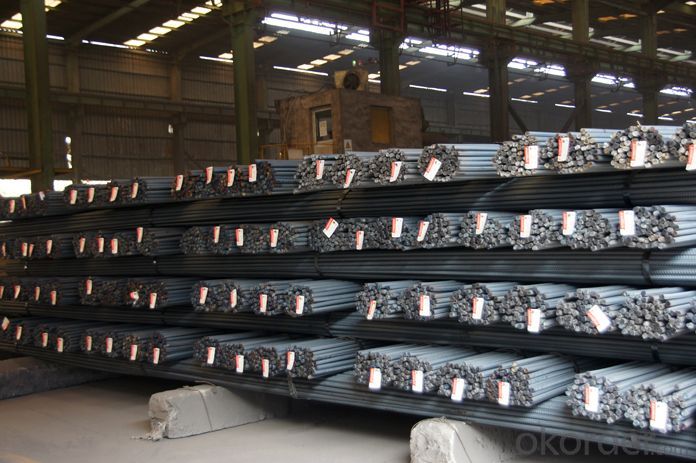
- Q: What is the typical lifespan of steel rebars in a non-corrosive environment?
- The typical lifespan of steel rebars in a non-corrosive environment can vary, but they are generally expected to last for several decades or even more than a century.
- Q: How do steel rebars contribute to the overall seismic performance of a structure?
- Steel rebars contribute to the overall seismic performance of a structure by providing reinforcement and strength. The rebars are embedded in concrete, creating a composite material that enhances the structural integrity and resistance to seismic forces. They help to distribute the applied loads more evenly, absorb and dissipate energy during earthquakes, and prevent the concrete from cracking or failing under stress. Overall, steel rebars significantly improve the resilience and safety of structures in seismic events.
- Q: How do steel rebars affect the maintenance requirements of a structure?
- The maintenance requirements of a structure are significantly influenced by steel rebars, also known as reinforcing bars. These bars, which are constructed from steel, are embedded in concrete to provide strength and durability to the structure. Enhancing the overall structural integrity of a building or infrastructure is one of the primary ways in which steel rebars impact maintenance. The presence of rebars greatly increases the load-bearing capacity of concrete, enabling it to withstand external forces such as wind, earthquakes, and heavy loads. This reinforcement helps to prevent cracks, deformations, and structural failures, ultimately reducing the maintenance needs of a structure. Moreover, steel rebars also contribute to the longevity of a structure. By offering tensile strength to concrete, they shield it from the negative effects of shrinkage and expansion caused by temperature fluctuations. These rebars act as a framework that holds the concrete together, minimizing the risk of cracks and ensuring the structural stability of the building over time. As a result, the maintenance requirements are reduced as the structure remains intact and resilient against environmental factors. Nevertheless, it is important to acknowledge that steel rebars can also impact maintenance requirements in specific situations. If the rebars are not designed, installed, or protected properly, they can be vulnerable to corrosion. Corrosion occurs when moisture and oxygen penetrate the concrete and reach the steel, causing it to rust. Rusting rebars can lead to the expansion of steel, creating internal pressure that can result in cracking and spalling of the concrete. Consequently, regular inspections, maintenance, and protection measures such as epoxy coating or cathodic protection systems are necessary to prevent corrosion and ensure the longevity of the structure. In conclusion, steel rebars have a positive impact on the maintenance requirements of a structure by enhancing its strength, durability, and longevity. They decrease the need for repairs and maintenance caused by structural failures and increase the overall resilience against external forces. However, proper design, installation, and protection of rebars are crucial to avoid corrosion-related issues that could increase maintenance needs.
- Q: Can steel rebars be used in underground parking structures?
- Yes, steel rebars can be used in underground parking structures. They are commonly used in the construction of reinforced concrete structures, including underground parking decks, to provide additional strength and durability to the concrete. Steel rebars help to reinforce the concrete and enhance its load-bearing capacity, making them essential components in underground parking structures.
- Q: What is the effect of impurities on the corrosion resistance of steel rebars?
- The corrosion resistance of steel rebars can be significantly affected by impurities. Steel rebars consist primarily of iron and carbon, but varying amounts of impurities like sulfur, phosphorus, and silicon can also be present. One common impurity found in steel is sulfur. When sulfur reacts with water and oxygen, it forms sulfuric acid, which accelerates the corrosion process. This acid attack can cause rebars to deteriorate faster, reducing their overall strength and durability. Another impurity, phosphorus, can have a negative impact on the corrosion resistance of steel rebars. It can promote the formation of localized corrosion sites called pitting, which can lead to the development of rust and eventual structural damage. Although silicon is generally considered beneficial in steel production, excessive amounts can have adverse effects. Higher levels of silicon in rebars can result in the formation of a protective oxide layer. However, this layer can sometimes be porous, allowing corrosive agents to penetrate and cause corrosion. In conclusion, the presence of impurities in steel rebars can compromise their corrosion resistance. It is essential to ensure that construction steel meets specified standards and has minimal impurities. Additionally, proper maintenance and regular inspection of rebars are crucial to identify and address potential corrosion issues before they cause significant damage or structural failures.
- Q: How are steel rebars manufactured and processed?
- Steel rebars are manufactured and processed through a series of steps. Firstly, the raw materials like steel billets or scrap metal are melted in a furnace to create molten steel. This molten steel is then poured into molds of desired shapes and sizes to form billets. These billets are further processed through a rolling mill, where they are heated and passed through a series of rollers to shape them into long, thin bars. The bars are then cooled, straightened, and cut into desired lengths. To enhance their strength, rebars are often subjected to heat treatment or alloying processes. Finally, they undergo surface treatment, such as corrosion-resistant coatings, to protect against rusting. The finished steel rebars are then ready for use in construction and reinforcing concrete structures.
- Q: How do steel rebars affect the shrinkage and creep behavior of concrete?
- Steel rebars can significantly affect the shrinkage and creep behavior of concrete by providing reinforcement and reducing the overall cracking potential. The presence of rebars helps to distribute the tensile stress induced during drying shrinkage, thereby minimizing the development of cracks. Additionally, rebars can restrain the movement of concrete, reducing the creep deformation and improving the long-term stability of the structure.
- Q: Can steel rebars be used in structures with limited accessibility?
- Indeed, structures with limited accessibility can utilize steel rebars. These rebars are frequently employed in reinforced concrete structures for their ability to enhance strength and durability. They possess versatility, enabling effortless transportation and installation, even in regions with restricted access. Under such circumstances, steel rebars can be conveniently cut, bent, and assembled on-site to precisely accommodate the structure's specific requirements. Furthermore, steel rebars can be prefabricated off-site and subsequently transported to the construction site, facilitating simpler handling and installation in areas with restricted entry. Consequently, steel rebars emerge as a fitting choice for structures located in remote areas or regions with limited available space.
- Q: How are steel rebars protected from concrete spalling?
- Steel rebars are protected from concrete spalling through the use of two main methods: epoxy coating and concrete cover. Epoxy coating is applied to the rebars to prevent direct contact with the concrete, forming a protective layer that prevents corrosion. Additionally, a sufficient concrete cover is provided around the rebars to shield them from environmental factors and potential damage, ensuring their long-term durability and structural integrity.
- Q: How much does a futures screw do?
- Suppose the present price of the steel thread is 2515 yuan, this is the price per ton, the thread steel is 10 tons per hand, the contract value is 25150 yuan, the margin ratio is about 8%, so it will cost 2012 yuan to do one hand thread steel.
Send your message to us
Deformed bars Hot Rolled with Material GB HRB400
- Loading Port:
- Tianjin
- Payment Terms:
- TT OR LC
- Min Order Qty:
- 25 m.t.
- Supply Capability:
- 10000 m.t./month
OKorder Service Pledge
OKorder Financial Service
Similar products
Hot products
Hot Searches
Related keywords
